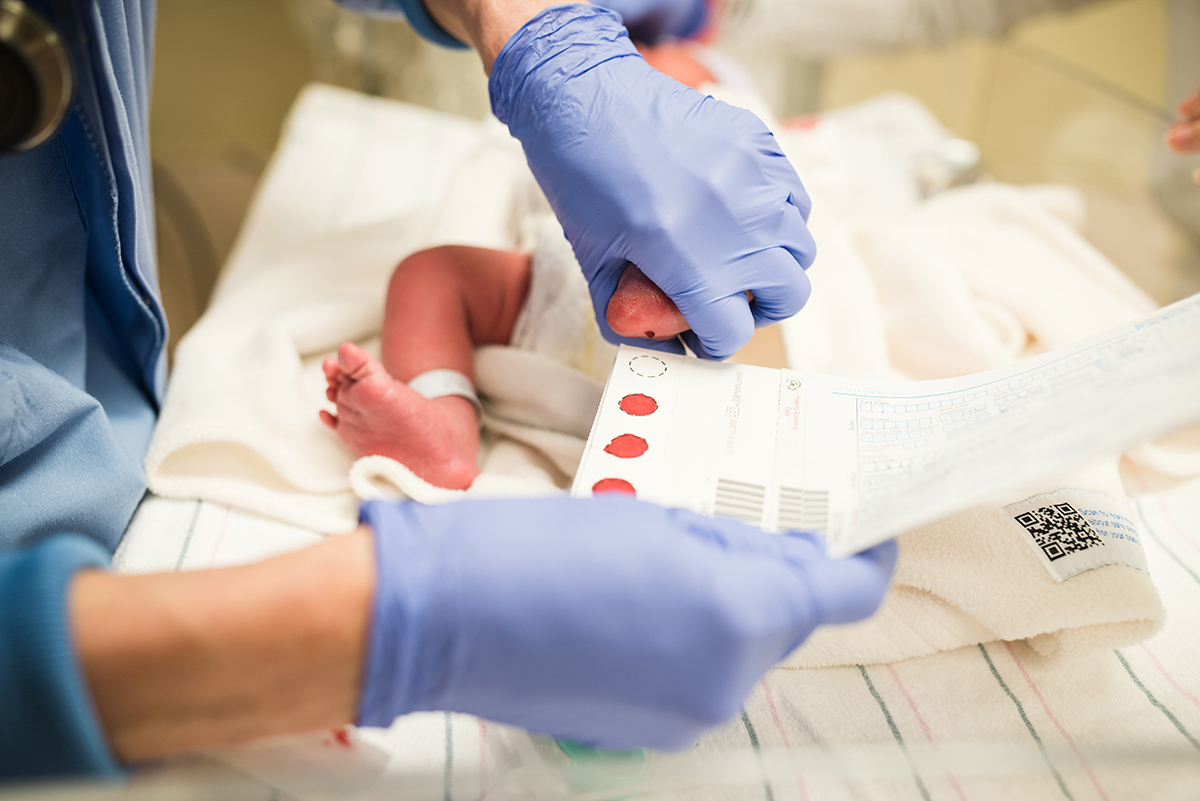Contact Info
CMV Screening and Results
Cytomegalovirus (CMV) screening methodology
Screening will use a qualitative real-time polymerase chain reaction (qPCR) screening method to identify CMV DNA in dried blood spots.
Some newborns infected with CMV before birth will not have enough virus in their blood to be detected on screening. As a result, some cases of congenital CMV (cCMV) will be missed. Clinicians are advised to maintain a high index of suspicion for patients whose clinical presentation suggests cCMV but CMV was not detected on screening.
When CMV is detected in initial specimens collected after 21 days of age, it will not be possible to use the screening result to distinguish between congenital and acquired infections. For these cases, it is recommended to talk with a pediatric infectious disease specialist to determine if additional follow-up is advised.
It may be that a baby requires a rescreen for another condition on the newborn screening panel or the specimen was insufficient. Because the newborn screening program tests every specimen that is submitted (regardless of specimen condition), it is possible that the first screening specimen does not detect CMV, but a second specimen drawn and submitted at a later date does detect CMV. Because the sensitivity of the screen is such that some babies with CMV will not be picked up by the screening method, if a blood spot specimen is ever found to have CMV virus present, the provider listed on the newborn screening card will be contacted by the newborn screening program and given the recommended follow-up.
For more information about collecting quality blood spot screening specimens and any additional considerations that should be taken into account with the addition of CMV screening to the newborn screening panel, please visit our webpage: Newborn Screening Information for Providers: Blood Spot Collection
 CMV screening results
CMV screening results
Below are the possible results that could be listed on the newborn screening report. Please note that there is decreased sensitivity in screening for CMV in dried blood spots, so not all infants with congenital CMV will be identified. Of those who are identified by newborn screening, up to 80% will be unaffected.
Within normal limits (CMV not detected)
- This result means no additional follow-up is required. If CMV was not detected by screening, but a child has symptoms of congenital CMV, consultation with a pediatric infectious disease specialist is advised.
- Results are returned to the provider who ordered the testing (birth hospital, midwife, or clinic).
Positive (CMV detected)
- This result means further testing is needed to determine if your baby has congenital CMV.
- Newborn Screening program staff will call your baby's doctor or clinic to inform them of the result and will recommend obtaining urine to confirm the screening result.
- Your baby's doctor will contact you to discuss the next steps.
Note: If your baby receives a result not listed above, your baby’s doctor will discuss the result with you and tell you if further testing is needed.